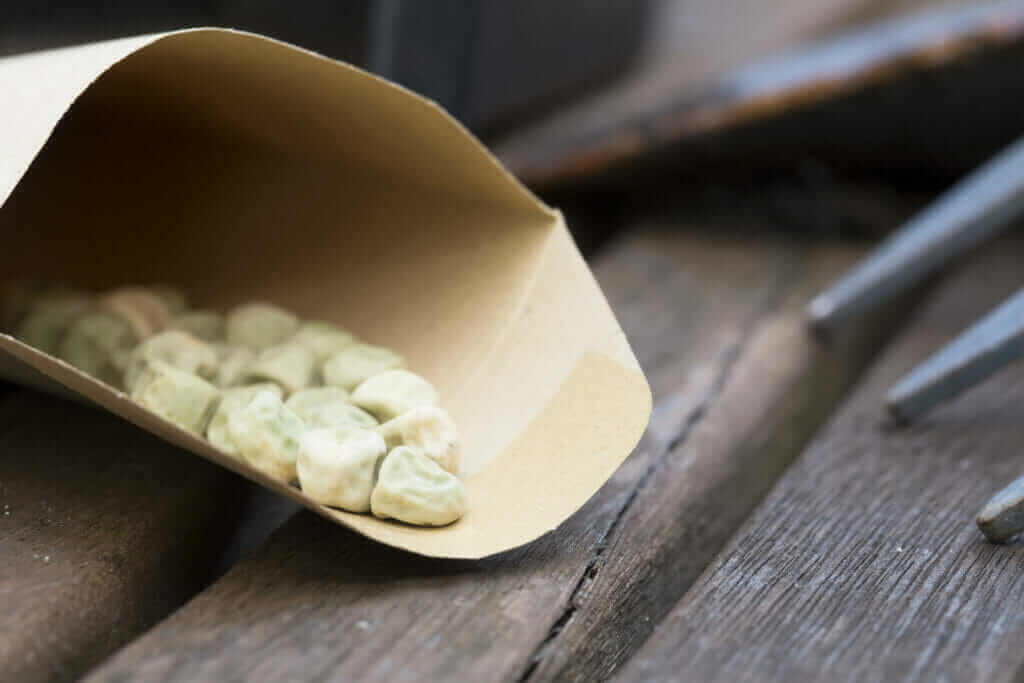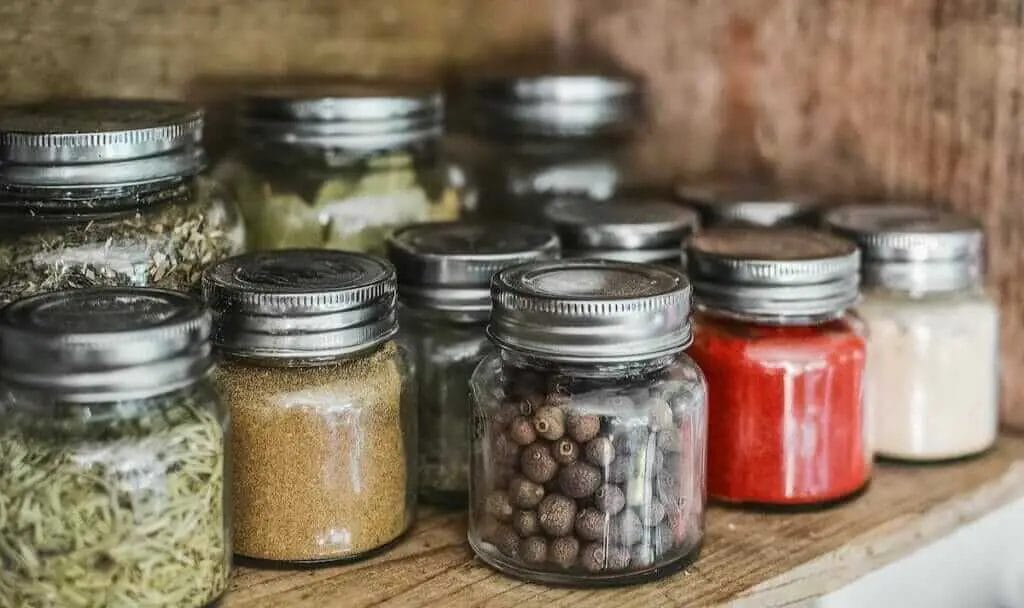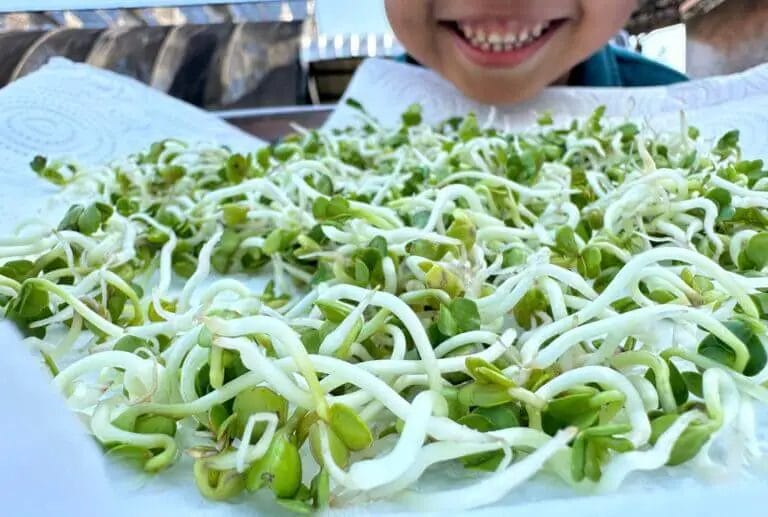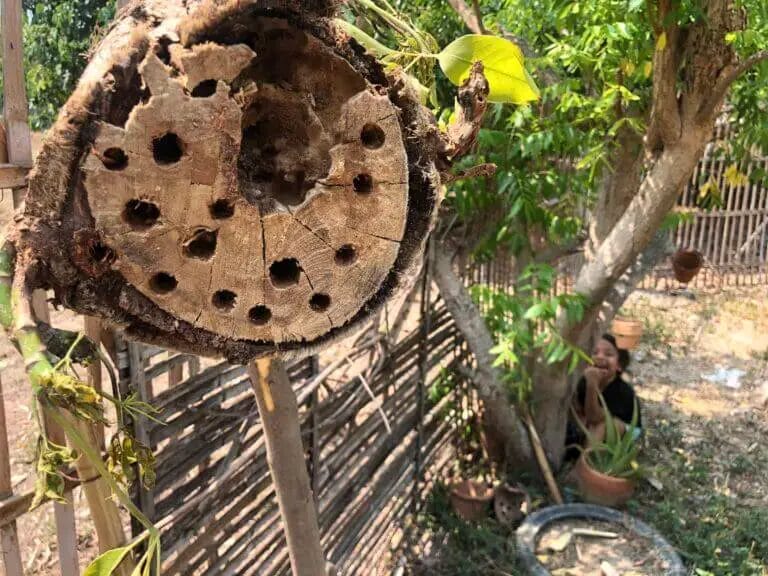Sproutingfam.com is supported by its readers. If you purchase through a link on my site, I may earn a commission. Learn more
5 Seed Storage Tips + What Not To Do
Seed storage is a simple process. You just need to make sure your seeds are cool and dry, and then stored in a safe container. A clay pot or sterilized mason jar should do the trick for long term storage. As long as the environment where you keep the seeds stored doesn’t pose any dangers to them.
This blog post informs about storing seeds long term and short term.

The Longest Seed Storage To Date?
Did you hear the news about the 2,000 year old biblical date palm that was brought back from extinction after its seeds were found stored in a clay pot?
A discovery similar to that of the Dead Sea Scrolls. If they sucessfully germinated seeds truly a millennia old, was it help from above or a secret seed storage method that’s to give the credit?
It’s an interesting story that begs a lot of questions.
This post will share how to store seeds.
Will they store for thousands of years?
We may not ever find this one out, but we can guarantee years of future use by storing seeds properly.
5 Seed Storing Methods
Make sure your seeds are ready for planting at any moments notice for years to come with these 5 seed saving tips.
1. Seed Storage Containers

Paper envelopes work great on a pinch for storing seeds.
Convenient seed storage envelopes can be bought online or you can easily make them fast. Then, you can always have a few slips in your wallet or purse for times you come across at random times good seeds to save.
Or you can easily make little seed storage sleeves too by learning how to make quick DIY paper envelopes.
This DIY envelopes videos shares how to make a paper envelope with any piece of paper. These are perfect for seed storage on the fly.
If you prefer to purchase the envelopes, any pack of seed storing envelopes like these should work great for short term storage:
- All envelopes measure 3.25" wide by 4.50" tall and come with a self sealing adhesive glue for an easy shut.
- Blank seed envelopes allow you to safely store and save freshly harvested seeds for next years growing season.
- Write, draw or print on these seed envelopes to personalize them. Seed envelopes will also make a great favor for giveaways at parties and events.
- Seed packet favors can be created to pass out at memorials, weddings, bridal showers, baby showers and more.
- The paper is uncoated with a regular finish like that of a piece of printer paper.
Looking for a more heavy duty seed storage option?
Maybe you’re dealing with crazy weather right now and want to make sure your seeds won’t get wet. You can use many airtight containers. They’re all good from pretty much any material. B
ut there are also set products created for this. These below can store your seeds safely, and help you organize them nicely as well:
- 24-COMPARTMENT BEAD STORAGE – Keep all your beading essentials in one place with this Darice Clear Bead Organizer Box. The 24removeablescrew-top canisters fit snugly in the9. 5” x 6. 375” x 1. 125” snap-tight case.
- STAY ORGANIZED – The 24 canisters are perfect for organizing small supplies, so you can spend more time creating and less time looking for the right piece. You can store beads by color, jewelry clasps by type, nails by size –whatever works best for you!
- “EZ” VIEW SYSTEM – You don’t even have to open the canisters to see what is inside with the “EZ” view storage system. The bead storage kit is clear, so you can quickly and easily find exactly what you need.
- ALL-INCLUSIVE ORGANIZATION – The craft holding case snaps tightly closed, so you can easily take your supplies on the go. This bead holder fits nicely in a drawer or on a shelf to keep your items together.
- STACKABLE – These bead storage containers are stackable, so you can have your entire bead and craft collection in one space with this easy-to-see clear plastic bead storage solution.
2. Let Seeds Dry Naturally Before Storing

Most seeds will fully dry attached to the plant, but others can be aided. When dealing with wet seeds, let the remaining fruit or vegetable flesh covering it to naturally rot away, then dry. Drying is the key factor for seed storage. You must let it fully dry naturally. It’s a natural preservation method.
Let them mature as well.
Most seeds will fully dry attached to the plant, but others can be aided. When dealing with wet seeds, let the remaining fruit or vegetable flesh covering it to naturally rot away, then dry. Drying is the key factor for seed storage. You must let it fully dry naturally. It’s a natural preservation method.
3. Seeds Should Be Kept In A Cool, Dark Area

Lighting is important for preserving seed freshness.
Light can break down the seed coating. If the skin coating opens then stuff can get in. Sun can degrade the seed coating.
Temperature matters too. Find a cool area, as well as dark, to store your seeds. A cool, dark storage area, even a freezer, has been known to be the best environment for storing seeds long term that are great for growing again.
4. Air Oxidizes Seed Coating

Air can oxidize the seed coating and also break it down. A vacuum sealer can help. Silica gel packs are helpful because they absorb moisture. The dryer the air, the better your seeds will store.
Vacuum sealing tips for storing seeds:
- A regular mason jar can also be vacuum sealed.
- A ziplock baggy in the freezer can work great too.
- To ensure the moisture is left out, you can toss a bunch of little seed packets inside of a vacuum sealed pouch.
- Vacuum packing helps with organization as well.
5. Avoid Hybrid Seeds

Watch out for cross pollinating vegetable groups. For example, if you plant pumpkins, cucumbers and squash next to each other, these have a high probability of swapping pollen and creating a mutant type of hybrid.
When storing seeds, you want to store the heirloom non-hybrid varieties, so these seeds would not be the prized seed storing type. This is why some people bag certain vegetables and fruits, to avoid the cross pollination either from the wind or via insects.
The solution is to not grow same variety types at the same time, or at least very far away from each other. This will make the seeds harvested a higher chance of creating an ideal saving seed.
Final Seed Storage Tips
Don’t Pluck Seeds Early To Store Them
You must let the seeds dry. You’ll have better seeds if you let them mature a bit longer. Let them almost fall off on their own. They will dry right on the vine or stem. If you remove seeds to soon and let them dry in a jar, you risk improper germination. This can result in bad seeds that won’t grow… and crushed hopes soon after planting them.
You Want Heirloom Seeds
Hybrids will give you random qualities from the original parents rather than a true-to-form result from the hybrid plant that the seed came from. Heirloom seeds are not hybrid seeds. They’re the best seeds for saving. For this reason, you want to save and store seeds from pure strains of your vegetables, fruits, and herbs.
Some seeds are easier to store than others. Legumes are some of the easiest, for example. Cauliflower and tomatoes are 2 more easier to store seed types.
We like to save butterfly pea seed pods. They pop up in the hundreds outside our home. At first I was plucking the seed pods prematurely from the vines, and prematurely from their pods. Now that I let them age longer first, they sprout more successful.
Summing it up
These seed storage tips should get you well on your way to storing seeds you will be able to use at any time throughout your lifetime, your kids’ and hopefully theirs, too!
Seeds that are well-stored should be good for at least 5 years and maybe even up to 10 years. They say 5 to 7 is the most you can expect, but then you have the story of the 2,000 year old seeds from a clay pot.
GMO seeds have been taking over, so it’s essential to know how to store and save untampered heirloom seeds. It can only help to try to save original seeds as God intended them to be from extinction (if that’s the correct terminology for a seed).
Follow these general seed storage guidelines to ensure your seeds stay good for at least a few years, up to, you never know, maybe even thousands.
Have you ever saved seeds for years and planted them successfully afterwords?
What’s your seed saving strategy?
What’s the longest you’ve stored seeds for?
NEXT: 5 Seed Cleaning Methods For Sprouting
Last update on 2025-12-06 / Affiliate links / Images from Amazon Product Advertising API









The seed coating technology is paving way for sustainable crop yield and thus will help in increasing on-farm productivity, providing an opportunity for the market to proliferate with advancements in seed coating technology.
Wow that is quite a comment. I’m sure there is a market out there for this type of statement. For me, seed coating technology for even more mass agriculture doesn’t sound enticing or good. Why can’t everyone just have community farms and be self reliant within their communities?
In regard to the screw top bead saver how do you ensure that the seeds stay dry?